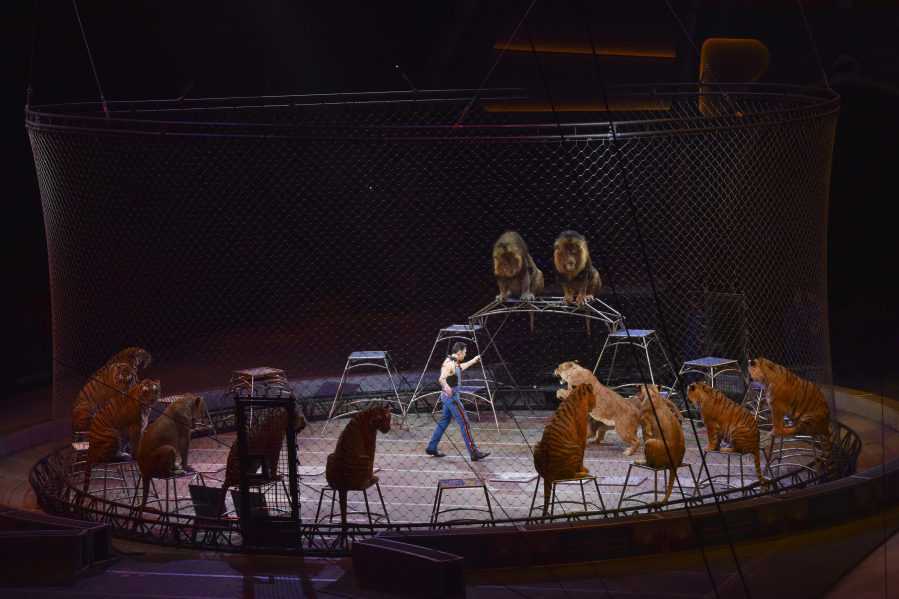The two horses gallop side by side at full speed, around and around the ring at the climax of the Ringling Bros. and Barnum & Bailey circus, which opened its final Washington, D.C., show on Friday as part of its farewell tour. Verizon Center pounds with the sound of drums.
Each speeding horse bears a man on its back, and astride them, one dainty foot on a shoulder of each rider, stands a woman in yellow tights. The horses race so fast around the curves that they lean in, and the trio of riders leans, too.
There’s an unbearable instant of doubt, as the gap between the horses widens, and the riders’ bare arms bulge as they work the reins. Still the horses run, more apart than together, yoked only by the agile young woman who’s now stretched in a full split between them.
“Welcome to the Greatest Show On Earrrrth,” ringmaster Johnathan Lee Iverson had bellowed, two hours earlier. The staples are all here: clowns and aerialists, lions and tigers, motorcycles whizzing at highway speeds in a steel-mesh globe. There’s no small amount of novelty, including a tightrope act on a teardrop-shaped wheel, with three wire-walkers from Hungary gliding airily on its rim as the wheel swoops and rises under their toes. At one point, clear plastic globes descend from the arena’s ceiling. Inside, unfurling themselves like fiddlehead ferns, are tiny acrobats.



